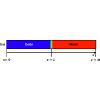当前位置:
X-MOL 学术
›
Phys. Rev. E
›
论文详情
Our official English website, www.x-mol.net, welcomes your
feedback! (Note: you will need to create a separate account there.)
Phase-field model of oxidation: Kinetics
Physical Review E ( IF 2.2 ) Pub Date : 2020-02-24 , DOI: 10.1103/physreve.101.022802 Kyoungdoc Kim , Quentin C. Sherman , Larry K. Aagesen , Peter W. Voorhees
Physical Review E ( IF 2.2 ) Pub Date : 2020-02-24 , DOI: 10.1103/physreve.101.022802 Kyoungdoc Kim , Quentin C. Sherman , Larry K. Aagesen , Peter W. Voorhees

|
The kinetics of oxidation is examined using a phase-field model of electrochemistry when the oxide film is smaller than the Debye length. As a test of the model, the phase-field approach recovers the results of classical Wagner diffusion-controlled oxide growth when the interfacial mobility of the oxide-metal interface is large and the films are much thicker than the Debye length. However, for small interfacial mobilities, where the growth is reaction controlled, we find that the film increases in thickness linearly in time, and that the phase-field model naturally leads to an electrostatic overpotential at the interface that affects the prefactor of the linear growth law. Since the interface velocity decreases with the distance from the oxide vapor, for a fixed interfacial mobility, the film will transition from reaction- to diffusion-controlled growth at a characteristic thickness. For thin films, we find that in the limit of high interfacial mobility we recover a Wagner-type parabolic growth law in the limit of a composition-independent mobility. A composition-dependent mobility leads to a nonparabolic kinetics at small thickness, but for the materials parameters chosen, the deviation from parabolic kinetics is small. Unlike classical oxidation models, we show that the phase-field model can be used to examine the dynamics of nonplanar oxide interfaces that are routinely observed in experiment. As an illustration, we examine the evolution of nonplanar interfaces when the oxide is growing only by anion diffusion and find that it is morphologically stable.
中文翻译:

氧化相场模型:动力学
当氧化膜小于德拜长度时,使用电化学的相场模型检查氧化的动力学。作为模型的测试,当氧化物-金属界面的界面迁移率大且薄膜的厚度比德拜长度长得多时,相场方法可恢复经典瓦格纳扩散控制的氧化物生长的结果。但是,对于较小的界面迁移率,其中的增长受反应控制,我们发现膜的厚度随时间线性增长,并且相场模型自然会在界面处产生静电超电势,从而影响线性增长的因素。法。由于界面速度随与氧化物蒸气的距离而减小,因此对于固定的界面迁移率,膜将以特征厚度从反应控制的生长过渡到扩散控制的生长。对于薄膜,我们发现在高界面迁移率的限制下,我们在与成分无关的迁移率的限制下恢复了Wagner型抛物线生长定律。取决于成分的迁移率会导致厚度较小的非抛物线动力学,但对于所选的材料参数,与抛物线动力学的偏差很小。与经典的氧化模型不同,我们表明,相场模型可用于检查实验中常规观察到的非平面氧化物界面的动力学。作为说明,当氧化物仅通过阴离子扩散生长时,我们检查了非平面界面的演变,发现它在形态上是稳定的。我们发现,在高界面迁移率的限制下,我们在与成分无关的迁移率的限制下恢复了Wagner型抛物线增长定律。取决于成分的迁移率会导致厚度较小的非抛物线动力学,但对于所选的材料参数,与抛物线动力学的偏差很小。与经典的氧化模型不同,我们表明,相场模型可用于检查实验中常规观察到的非平面氧化物界面的动力学。作为说明,当氧化物仅通过阴离子扩散生长时,我们检查了非平面界面的演变,发现它在形态上是稳定的。我们发现,在高界面迁移率的限制下,我们在与成分无关的迁移率的限制下恢复了Wagner型抛物线增长定律。取决于成分的迁移率会导致厚度较小的非抛物线动力学,但是对于所选的材料参数,与抛物线动力学的偏差很小。与经典的氧化模型不同,我们表明,相场模型可用于检查实验中常规观察到的非平面氧化物界面的动力学。作为说明,当氧化物仅通过阴离子扩散生长时,我们检查了非平面界面的演变,发现它在形态上是稳定的。取决于成分的迁移率会导致厚度较小的非抛物线动力学,但对于所选的材料参数,与抛物线动力学的偏差很小。与经典的氧化模型不同,我们表明,相场模型可用于检查实验中常规观察到的非平面氧化物界面的动力学。作为说明,当氧化物仅通过阴离子扩散生长时,我们检查了非平面界面的演变,发现它在形态上是稳定的。取决于成分的迁移率会导致厚度较小的非抛物线动力学,但对于所选的材料参数,与抛物线动力学的偏差很小。与经典的氧化模型不同,我们表明,相场模型可用于检查实验中常规观察到的非平面氧化物界面的动力学。作为说明,当氧化物仅通过阴离子扩散生长时,我们检查了非平面界面的演变,发现它在形态上是稳定的。
更新日期:2020-02-24
中文翻译:

氧化相场模型:动力学
当氧化膜小于德拜长度时,使用电化学的相场模型检查氧化的动力学。作为模型的测试,当氧化物-金属界面的界面迁移率大且薄膜的厚度比德拜长度长得多时,相场方法可恢复经典瓦格纳扩散控制的氧化物生长的结果。但是,对于较小的界面迁移率,其中的增长受反应控制,我们发现膜的厚度随时间线性增长,并且相场模型自然会在界面处产生静电超电势,从而影响线性增长的因素。法。由于界面速度随与氧化物蒸气的距离而减小,因此对于固定的界面迁移率,膜将以特征厚度从反应控制的生长过渡到扩散控制的生长。对于薄膜,我们发现在高界面迁移率的限制下,我们在与成分无关的迁移率的限制下恢复了Wagner型抛物线生长定律。取决于成分的迁移率会导致厚度较小的非抛物线动力学,但对于所选的材料参数,与抛物线动力学的偏差很小。与经典的氧化模型不同,我们表明,相场模型可用于检查实验中常规观察到的非平面氧化物界面的动力学。作为说明,当氧化物仅通过阴离子扩散生长时,我们检查了非平面界面的演变,发现它在形态上是稳定的。我们发现,在高界面迁移率的限制下,我们在与成分无关的迁移率的限制下恢复了Wagner型抛物线增长定律。取决于成分的迁移率会导致厚度较小的非抛物线动力学,但对于所选的材料参数,与抛物线动力学的偏差很小。与经典的氧化模型不同,我们表明,相场模型可用于检查实验中常规观察到的非平面氧化物界面的动力学。作为说明,当氧化物仅通过阴离子扩散生长时,我们检查了非平面界面的演变,发现它在形态上是稳定的。我们发现,在高界面迁移率的限制下,我们在与成分无关的迁移率的限制下恢复了Wagner型抛物线增长定律。取决于成分的迁移率会导致厚度较小的非抛物线动力学,但是对于所选的材料参数,与抛物线动力学的偏差很小。与经典的氧化模型不同,我们表明,相场模型可用于检查实验中常规观察到的非平面氧化物界面的动力学。作为说明,当氧化物仅通过阴离子扩散生长时,我们检查了非平面界面的演变,发现它在形态上是稳定的。取决于成分的迁移率会导致厚度较小的非抛物线动力学,但对于所选的材料参数,与抛物线动力学的偏差很小。与经典的氧化模型不同,我们表明,相场模型可用于检查实验中常规观察到的非平面氧化物界面的动力学。作为说明,当氧化物仅通过阴离子扩散生长时,我们检查了非平面界面的演变,发现它在形态上是稳定的。取决于成分的迁移率会导致厚度较小的非抛物线动力学,但对于所选的材料参数,与抛物线动力学的偏差很小。与经典的氧化模型不同,我们表明,相场模型可用于检查实验中常规观察到的非平面氧化物界面的动力学。作为说明,当氧化物仅通过阴离子扩散生长时,我们检查了非平面界面的演变,发现它在形态上是稳定的。











































 京公网安备 11010802027423号
京公网安备 11010802027423号